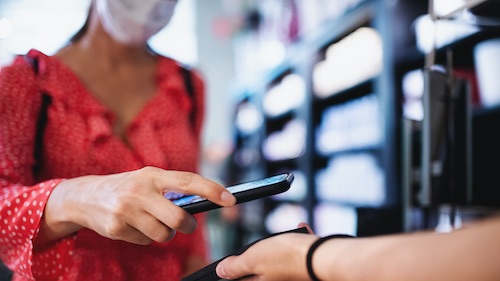
Get your FREE 30-day trial.
Please complete all fields.
Mobile marketing today is all about interacting with your users. Engagement is key to ROI, so marketing methods like push messaging enable you to create, retain, and boost that user interaction and engagement.
Push messaging allows you to deliver messages to the user's home screen while he or she is using a different app. It is the app marketing form of a tap on the shoulder. It's natural to assume that a good app experience will always keep users coming back for more, but the truth is that user retention is a challenge when there are about a thousand things competing for someone's attention in a given day.
By sending users push notifications, you open the door for a re-engagement with your app. Here, we outline four of those programs you should be running in your app.
#1 Timely Reminders
Alarm, calendar, to-do list, and other time-sensitive apps often use push messaging to relay reminders to the user, but they can be utilized for almost all app types. Because push notifications tend to be abrupt when not properly targeted, apps that have frequent need to send user-specified reminders are the best use case. It can also work for other industry apps, even e-commerce apps when used correctly. Push messages can remind users of items left in their cart, upcoming sales, and even product re-stocks or availability.
#2 Special Offers
Similarly, apps can also use push messaging to promote special offers. Using push in this situation is less common, given that users don't typically want to be bombarded by coupons and notifications (think of where email has gone in the past few years). However, if you're running a mobile-specific offer, a push notification is a good way to notify your user segment of the deal. Often, time-sensitive offers like flash sales work particularly well for push message campaigns, and can be paired with in-app messages to further drive in-app purchases.
For media apps, push messaging can also work to gain more subscribers. In this vertical, the most common challenge for apps is to convert passive users to active subscribers. Without the right incentive, those who casually view content on your app won't pay to subscribe for access to your best content. By sending unsubscribed users a push message for X% off a subscription for a limited time only, you can re-engage some latent users who may have ignored your content for a while and convert more users to subscribers.
#3 Make Critical Information More Accessible
Much like reminders, informing users of critical information is best done in a push message. Take a travel app, for example. Most people look forward to reaching their destination, but the journey can be stressful. Travel apps can limit frustrations by providing critical trip information to users with push messages. Things like flight status updates, airport security alerts, destination weather advisories, and other notifications save users from plunging into internet research to find answers to personal travel questions.
But make sure to only push information that users need to know. In this example, don't start messaging users about new taxi services in the area, but do keep users "in the know" about potential delays that will affect broader plans as soon as possible. Critical information for other apps could be important app updates, lost auctions, or emergency alerts.
#4 "We've Missed You!" (So Try This Feature)
On its own, "We've Missed You!" isn't a very interesting push campaign. But as you become more sophisticated in your analysis of your users through event tracking, retention analysis and ROI reporting, you will see connections between particular features, repeat app usage, and revenue. Once you discover these signature features, you will know what those features are that you'll want to draw attention to in order to bring latent users back into the app.
Once you've started to run campaigns, track results, and user those analytics to inform marketing wins and loses, you'll have the opportunity to get more creative with your push messaging offers, content, and frequency. The key is to always be measuring your campaigns for initial success (impressions, click-throughs, and conversion rate), but more importantly for long-term success, including user lifetime value.
 Bryn Adler is the Content Marketing Manager at Localytics. A journalist-turned-marketer, she is an expert in mobile, inbound marketing and social media. She loves new tech, startups, and puppies. You can follow her on Twitter @BrynAdler. Localytics is a part of the Partner Community in the HubExchange program. You can download their Localytics Advanced Mobile App Analytics app today!
Bryn Adler is the Content Marketing Manager at Localytics. A journalist-turned-marketer, she is an expert in mobile, inbound marketing and social media. She loves new tech, startups, and puppies. You can follow her on Twitter @BrynAdler. Localytics is a part of the Partner Community in the HubExchange program. You can download their Localytics Advanced Mobile App Analytics app today!